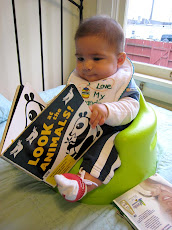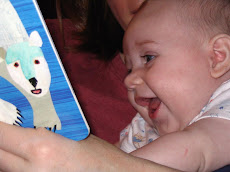
Here are some suggestions on how you can use magnetic letters at home (or in child care). Enjoy!
SOURCE: http://www.olentangy.k12.oh.us/pdf/kinder/magblocks.pdf1.
LETTER PLAY Encourage children to play with the magnetic letters on the refrigerator or on a table. Playing with letters allows children to learn more about how they look.
2.
MAKING NAMES A child’s name is their most important word. Have children make their names several times, mixing up the letters, making their names and checking them with their names written on a card.
3.
LETTER MATCH Invite children to find other letters that look exactly the same as a letter in their name (e.g., place an m on the refrigerator and have the child find all the ones that look like it). They don’t need to know the letter name.
4.
NAME GAME Have children make names of friends or family. Have them make the name, mix the letters, and make the names several times.
5.
MAKING WORDS Make a simple word like mom or dad or sun and have your child make the same word by matching each letter below the model (sun – s-u-n).
6.
ALPHABET TRAIN Have your child put the lowercase magnetic letters in the order of the alphabet. Then they can point to them and sing the alphabet son. Have them repeat the process with uppercase letters.
7.
CONSONANT/VOWEL SORT Have children sort the consonant letters and the vowel letters.
8.
FEATURE SORT Have children sort letters in a variety of ways – e.g., letters with long sticks and letters with short sticks, letters with circles and letters with no circles, letters with tunnels and letters with dots, letters with slanted sticks and letters with straight sticks.
9.
COLOR SORT Have children sort all the red, blue, green, yellow letters.
10. UPPERCASE/LOWERCASE MATCH Have children match the uppercase letters with the lowercase form.
11.
WRITING LETTERS Have children select ten different letters and write each letter on a paper. They can use the magnetic letter as a model.
12.
WRITING WORDS Have children make five simple words (such as dog, fun, big, hat, like, sit)and then write them on a sheet of paper.
13.
MAKING FOOD WORDS Make some words that identify food – e.g., bun, corn, rice. Have children draw pictures of each, mix the letters, and make the words again.
14.
MAKING COLOR WORDS Give children a list of color words with an item made in that coloras a picture support (for example, a red ball). Have children make the color word with magnetic letters using the model, mix the letters, and make it again several times.
15.
MAKING NUMBER WORDS Give children a list of numerals with the number word next to each. Have children make the word and mix the letters two or three times.
16.
LETTER NAMES Specify a color and have children take one colored letter at a time and say the letter name.
17.
MAGAZINE MATCH Look through a magazine or newspaper with children, cutting out some larger print simple words (such as man, box, boy). Glue them on a sheet of paper with plenty of space below each. Have children make each word below the printed one.
18.
FIND THE LETTER Make a set of alphabet letters, upper-or lowercase, on a set of index cards. Shuffle the “deck” and take turns drawing a card and finding the magnetic letter that corresponds to it.
19.
LETTER IN THE CIRCLE Draw two circles and place an h in one and an o in the other. Have children put letters in the h circle and say how they are like the h. Do the same with the o. This activity will help children learn to look at features of letters. Vary the letters in the circles; accept their explanations about what they are noticing.
20.
CHANGE THE WORD Build several simple words and show the children how to change, add, or take away a letter to make a new word. Examples are: me, he, we; me, my: at, hat, sat. After the demonstration put the needed letters in a special place in an empty container for them to practice.
21.
ALPHABET SEQUENCE Place the letter a on the table and have the child find the next letter (b)and place the letter c next to the b and have the child look for the next letter (d). Continue through the alphabet with lowercase letters. Repeat the uppercase letters.
22.
LETTER SORT Place a pile of magnetic letters on the table for the child to spread out. Have the child put all letters that are the same together in a pile. Then if appropriate, have the child give the letter name for each pile.
23.
LETTER CHAINS Make a five letter chain (for example, pfrmo). Have children find the sameletters and make the same chain below your model. Then have the children make a chain that you copy.
24.
LETTER BINGO Make two cards with a grid of three boxes across and three down. Trace one lowercase letter in each box. Put a pile of magnetic letters that are representing the letters on the cards and some that are not in a plastic bowl. Play a Letter Bingo game. Take turns taking a letter, saying its name, and then placing the letter in the box if there is a match. If there is not match, put the letter back in the bowl. The first to fill three boxes across, down, or diagonally says, “Bingo” and wins the game.Play the same game with uppercase letters.
25.
RHYMING PAIRS Use a magnetic cookie sheet. Make a simple three letter word such as dog, but, cat, fan, can, hot, man, net, pan, rat, sit. Say the word and then say a second word that rhymes (dog-log, bug-mug, cat-fat, fan-man). Ask the child to make the rhyming word below each.















































